An electric kayak for commuting to school
To make the experience fit your profile, pick a username and tell us what interests you.
We found and based on your interests.
To gear down the motor I am using a two gear system with a steel pinion and plastic spur gear. The broadest range I could find was 12t and 89t respectively, bringing the reduction to 7.4:1. Adding another set of gears would easily bring it to 10:1, but this also increases size and adds failure points. Using round aluminum bar I lathed an adapter to go from the 5mm motor shaft to 1/8in pinion internal diameter. The same metal was used to make a spur gear / prop shaft. It's held in place by two seated bearings that attach to the motor mount. Various spacers and pins make sure that everything stays in place and power is transferred from the motor to pinion to spur to prop. The entire assembly fits inside the "hub" of the prop as to create as little drag as possible.
Note: Unfortunately my lathe's motor decided to quit while I was working on another project, so it's going to take a while until I can make new parts if these don't work.
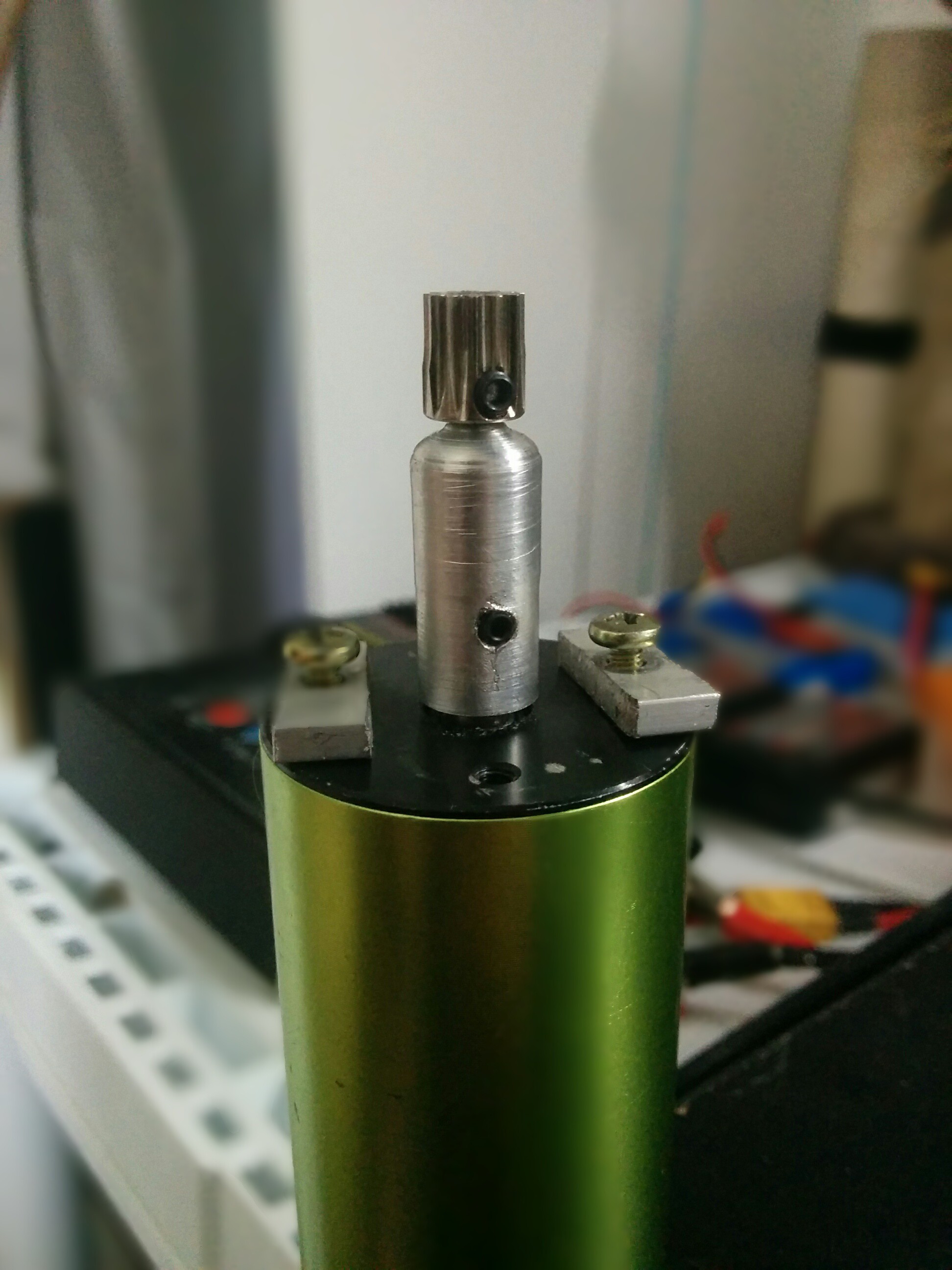
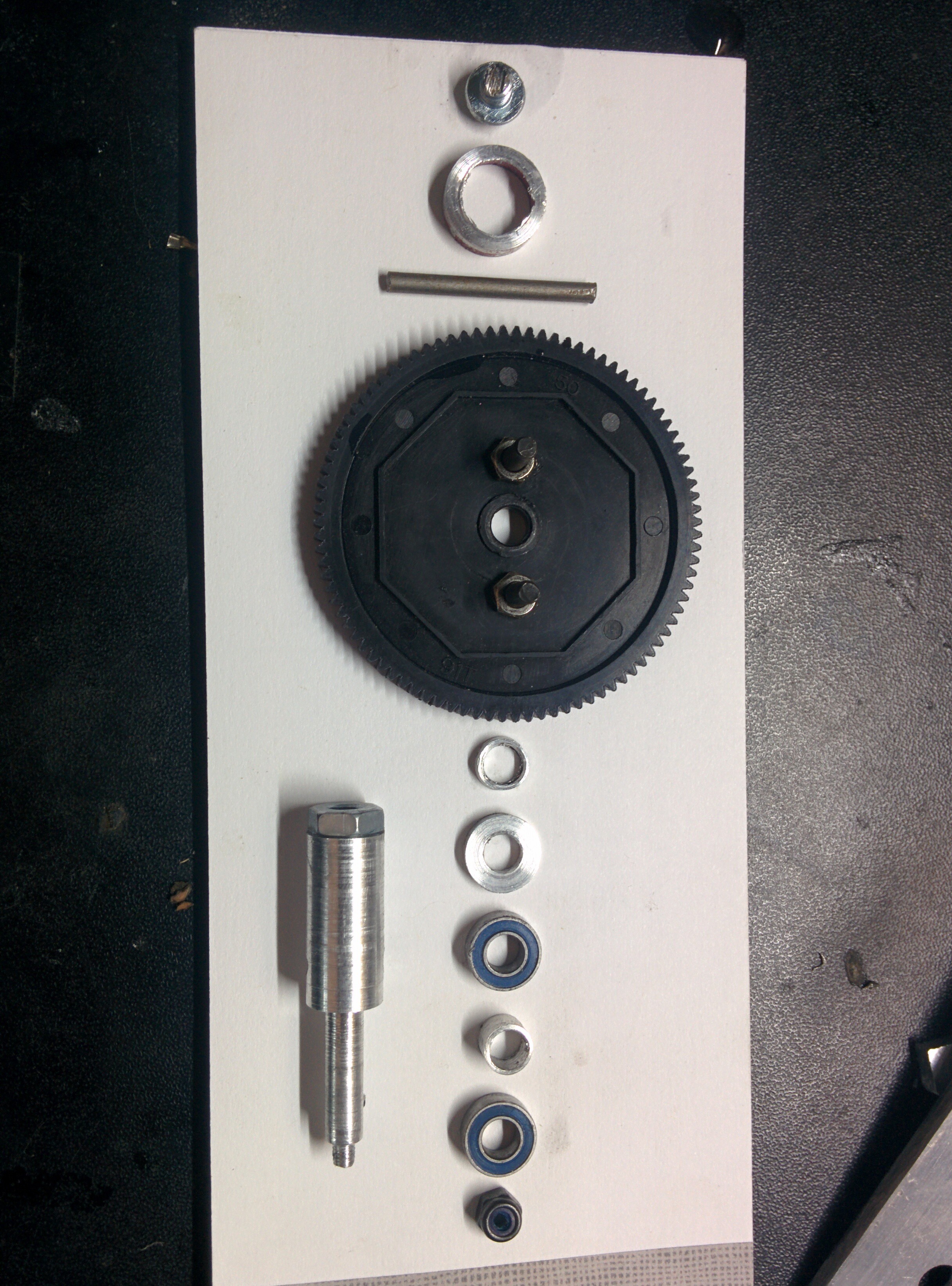
The motor that I'm using is designed for rc cars, and as such runs at very high rpm. Usually a motor like this might be paired with model boat props that are an inch or two in diameter. Instead it's turning a 9 in trolling prop, so it needs to be geared down considerably. The motor is rated at 4000 KV; that is rpm/V at no load. 8.4 V batteries will make this thing spin at over 30,000 rpm!!
Kayak speed can be approximated by prop pitch and rpm.
So the kayak will travel approximately 3.6 m/s or 12 km/h when the prop is turning at 2500 rpm. In a previous post I calculated that the power draw would be approximately 350W if travelling at this speed. I don't have any load-rpm graphs, but as a rough estimate I'll assume the motor runs at 75% of it's no load speed under this load. Therefore the motor needs to be geared down to 2500rpm / 0.75 = 3330 rpm.
So I need to gear a 10:1 reduction. In the next post I will show the build process.
I am using a pretty simple design for the motor mount. It attaches to the back of the kayak and has the motor mounted below the waterline, connected through a set of reduction gears to the prop. It was very important that I didn't modify the hull at all because I don't want to have any issues selling the kayak later. The threaded holes for the handle and drain plug make excellent mounting points for the the main plate pieces, which are cut from 6061 aluminum. The plate is reinforced where necessary by aluminum angle. I'm hoping this creates less drag than just having solid plate. The hinge allows the motor/prop assembly to swing up for going through shallow water or during transportation. Lastly, a wing nut is attached to a large bolt head that sits against the back of the hull. By turning the wingnut the prop angle is changed. Don't know whether this will have any noticeable effect but it's a neat design. Overall I'm really happy with how the mount came out. It's simple, rigid, and easily removable. After a few passes with a wire brush it even looks half decent, not something I can often say about my projects.
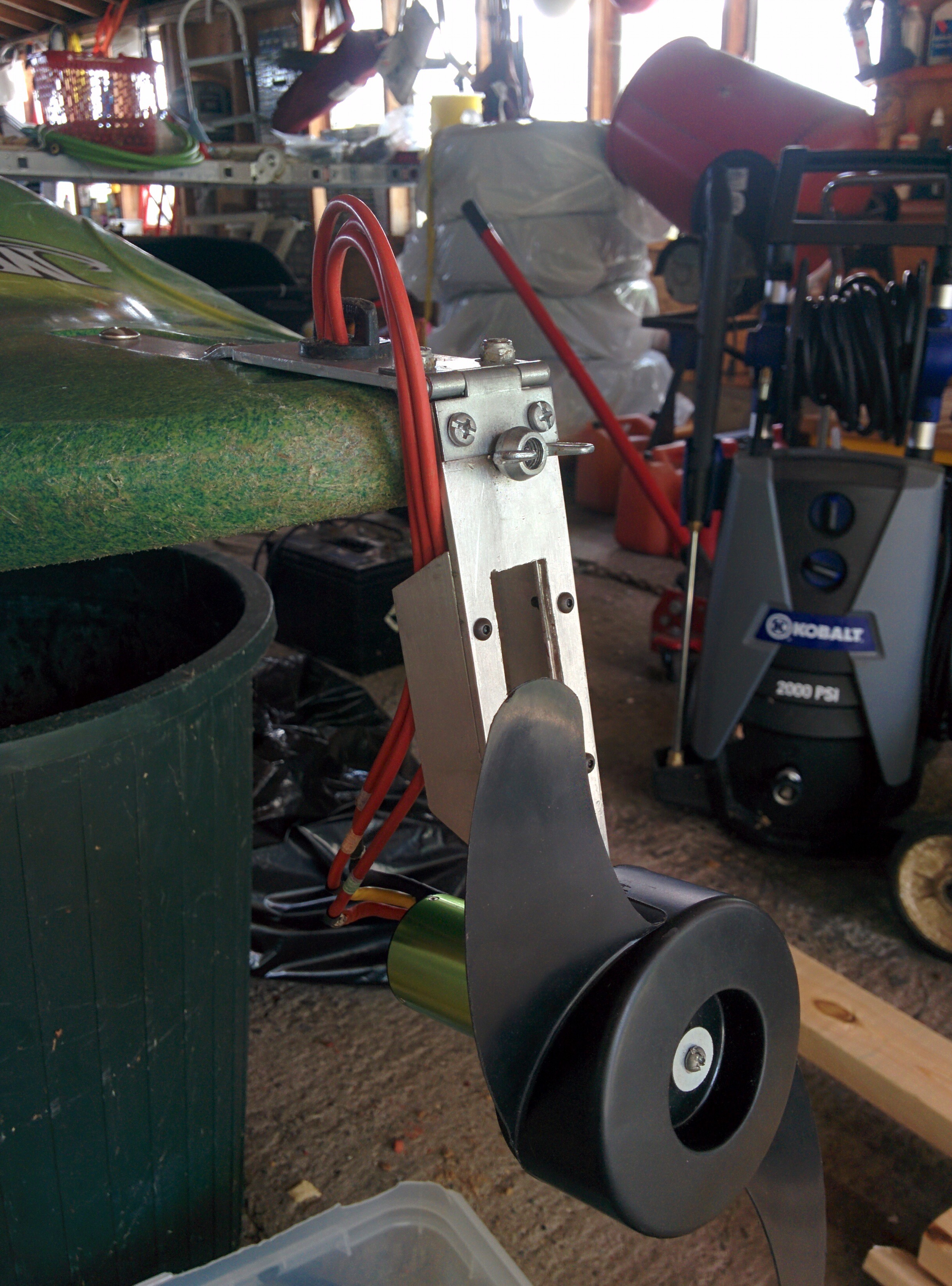
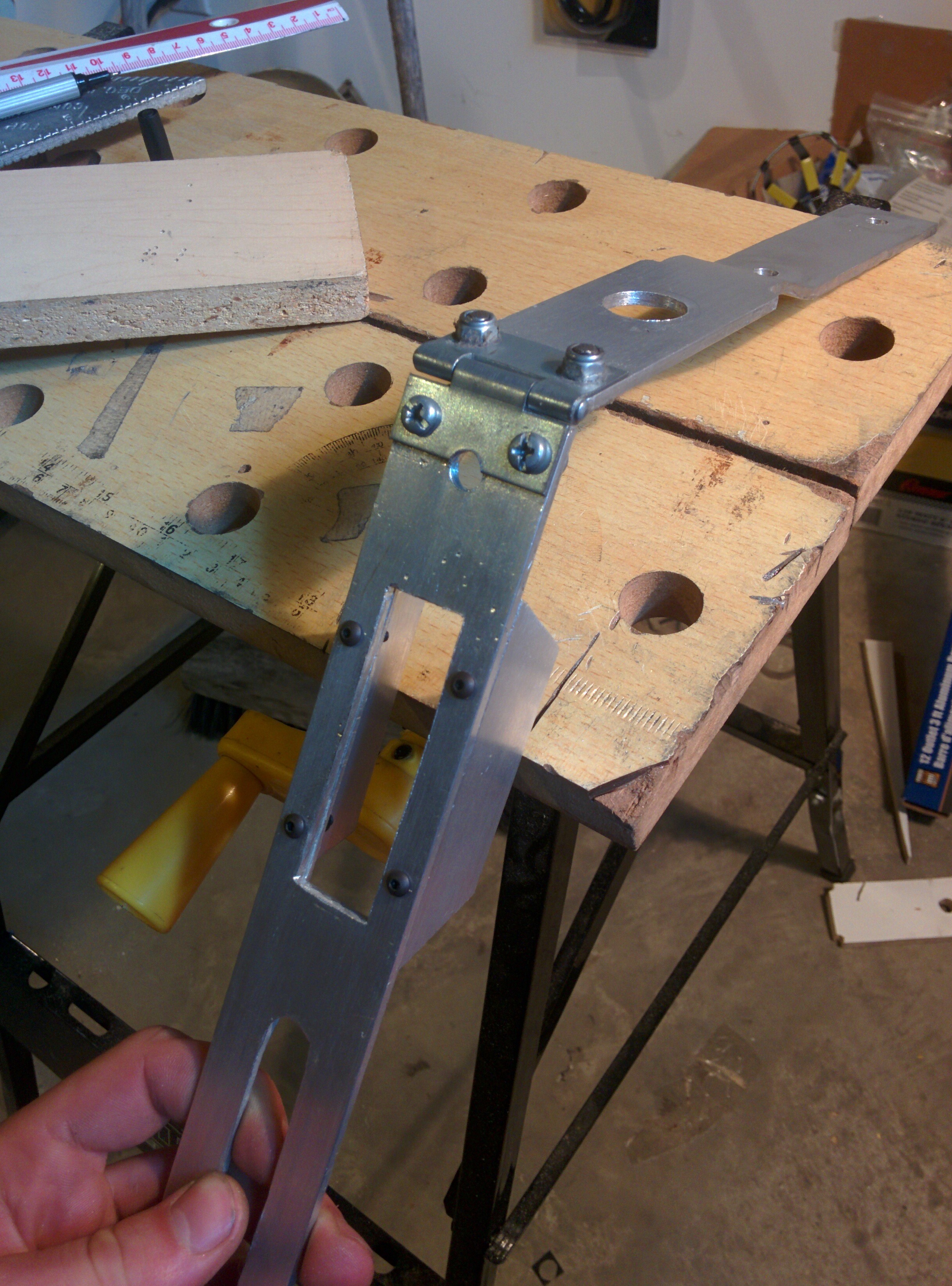
The first thing that needs to be done is figure out power requirements.
Two types of drag occur when an object is moving through water: viscous drag and wave drag. The first is due to the hull "dragging" molecules of water with it, and just like static friction the coarser the hull, the higher the drag. The second is due to energy lost making waves. Hull shape is a big factor, and I'm not doing myself any favors by using a whitewater kayak. This website gives some rough numbers for kayaks so I will go with it. The biggest kayak they calculated has 95 N of total drag at 3.6 m/s. Ignoring all other resistive forces and assuming 100% efficiency, the motor will pull around 350 watts to go around 12 km/h.
Since I want the kayak going about as fast as a bike, I'm going to calculate the drag and power needed at 20 km/h or 5.6 m/s.
This goes to show just how much more power is needed for higher speeds. I'm assuming that the numbers provided by the website include the mass of people in the kayak; otherwise these power estimates will be wayyyyy off.
As a proof of concept I'm using a brushless motor system designed for RC cars that I had lying around. It is rated at around 900W peak. Unfortunately I couldn't find any reliable information on continuous power so we'll just have to try it out.
Create an account to leave a comment. Already have an account? Log In.
Dominic
The kayak you have is a whitewater kayak. If you are already experienced in them you should be ok. If not, you should be aware that your model will turn really easily. It's tracking (ability to stay in a straight line) is very poor, likewise, it will tilt side to side easily. You will need to constantly correct for it as you move, especailly because as your kayaks tail shifts a little bit, the direction of thrust provided by the motor will also shift accordingly.
Of course, if you already familiar with handling a ww kayak, you should be ok, you will automatically correct with a paddle.
One thing that you can perhaps do is to rig up a stabilizer sort of thing, perhaps like a outrigger that will improve the tracking abilities.
My prop came with the outboard. It is a three blader, 6 inches across. The propellor you are using is designed to be used in conjunction with a submerged motor and fairing which reduces the propellor drag. If you can get a propellor with a smaller centre hub, you will reduce drag. Better, you can build a streamlined fairing that covers the whole of the underwater portion of your drive. For inspiration, look at photos of the 1930's racing aircraft that used fairings on exposed parts. You can build a fairing with discarded polystyrene foam, a craft knife and some sandpaper. Polystyrene foam dissolves in many glues and paints. I used water-based silicon sealant for my glue and water-based paints. You can also use balsa wood (from hobby shops and some hardware stores). Balsa doesn't react to glues and paints but costs more than discarded foam.
Thanks for the advice! Unfortunately im stuck with the whitewater kayak hull for now. What kind of prop did you use? I'm using an 8in diam trolling prop. Unfortunately the motor I'm using spins at 30000 rpm at 12v so a 10:1 reduction is necessary to get in the area of intended operation for the prop.
A few years ago, I did some small experimentation on powering a touring kayak with an off-the-shelf 150watt electric outboard. Your desired range should not be a problem (just use the correct size battery) but it will be impossible to get anywhere near bike speeds. Perhaps you could replace the speed target with the pleasure of cruising to Uni in solitude. Your hull is not the best for speed - too short. If the budget stretches, a longer, leaner K1 or TK1 hull would give you a couple more KpH's.
Become a member to follow this project and never miss any updates
By using our website and services, you expressly agree to the placement of our performance, functionality, and advertising cookies. Learn More
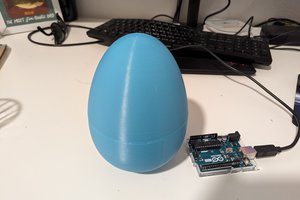
 Krockwell
Krockwell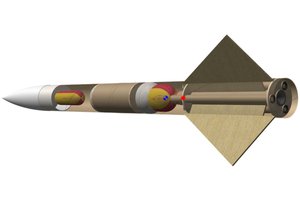
 Mark Gryn
Mark Gryn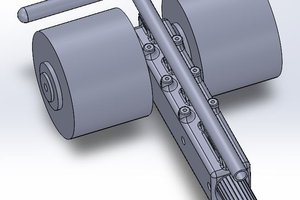
 f4drj
f4drj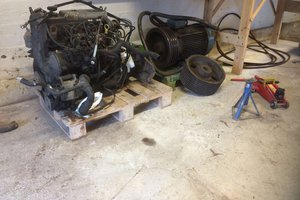
 Jesse Tolvanen
Jesse Tolvanen
I am hoping that you had success and will update how the build worked out.